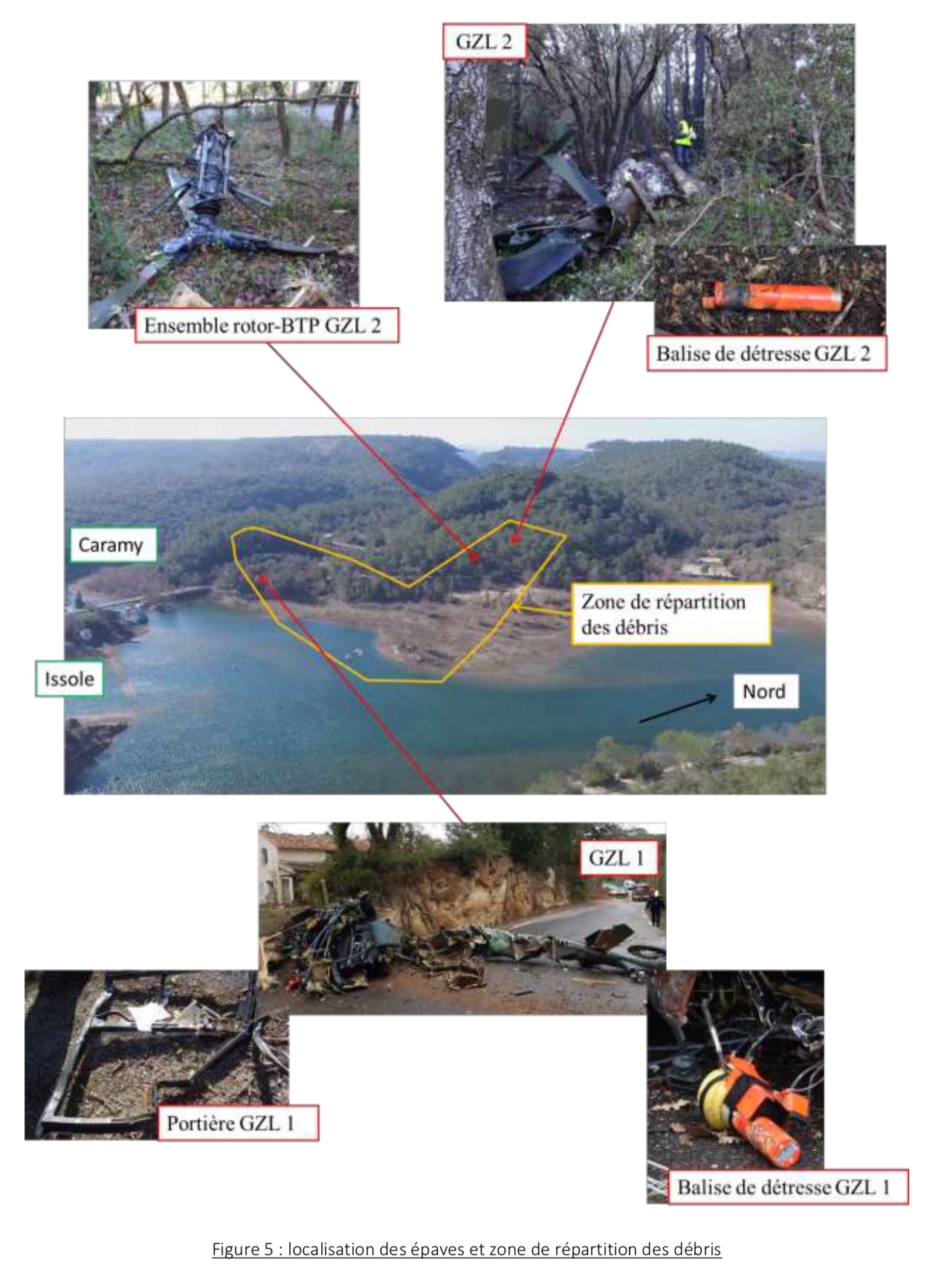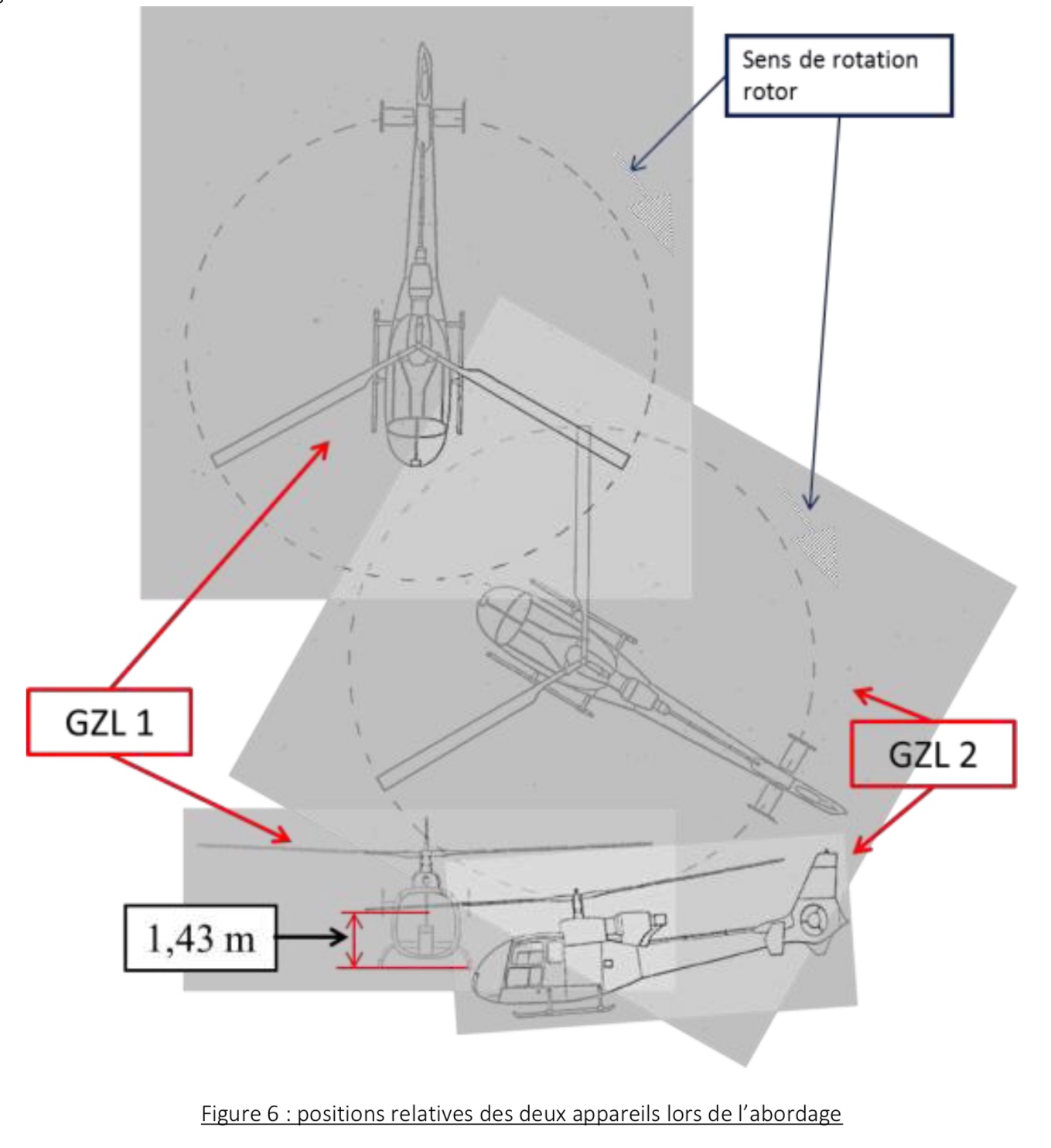
ASN Wikibase Occurrence # 205663
This information is added by users of ASN. Neither ASN nor the Flight Safety Foundation are responsible for the completeness or correctness of this information.
If you feel this information is incomplete or incorrect, you can submit corrected information.
| Date: | Friday 2 February 2018 |
| Time: | 08:36 LT |
| Type: |  Aérospatiale SA 342Ma Gazelle |
| Owner/operator: | ALAT (EALAT) |
| Registration: | F-MGEE |
| MSN: | 4209 |
| Fatalities: | Fatalities: 3 / Occupants: 3 |
| Other fatalities: | 2 |
| Aircraft damage: | Destroyed |
| Category: | Accident |
| Location: | S of Lac de Carcès, Var 83 -
 France France
|
| Phase: | Manoeuvring (airshow, firefighting, ag.ops.) |
| Nature: | Military |
| Departure airport: | Le Luc-Le Cannet Airport (LFMC) |
| Le Luc-Le Cannet Airport (LFMC) | |
| Investigating agency: | BEA-E |
| Confidence Rating: |
At 8:28 am, a Gazelle takes off from Luc (83) followed by another Gazelle, one minute and a half apart. Both helicopteres were engaged in independent technical training missions for long-distance observation around Carcès and Brignoles (83).
Each helicopter left the aerodrome circuit individually through the "Ubacs" sector at an altitude of about 2,000 ft and continued to the work area to the west.
The aircraft then descended to a low altitude to their first station of observation (PO). At 8:36 am the two aircraft collided at the southern end of Lake Carces.
The Gazelle F-MGEE crashed on the departmental road 24 (D24). The Gazelle F-MGEH lost its main rotor hub assembly (MRP), crashed into the forest about 500 metres north of the other Gazelle and burst into flames.
All five crew members died. Both helicopters were destroyed.
BEA-E report:
3. CONCLUSION
The event is a collision of two helicopters at the end of the implementation phase for two independent training sessions, in daylight flight.
3.1. Established elements useful for understanding the event
The two helicopters each carry out an independent training mission.
This mission of instruction of a future captain induces a particular operation where a role play is established between the trainee and the monitor.
The helicopters take off at a spacing of one minute and thirty seconds instead of the scheduled five minutes and move to the same area.
A frequency of security is planned, but its use is not formalized. It is only displayed on one helicopter.
Each helicopter must reach its own observation post, 1,500 meters apart.
Each trajectory is coherent to reach the assigned observation post.
The GZL 1 joins the lake of Carcès along a massif on its northern slope then turns left towards his first PO to the south.
The GZL 2 joins the lake of Carcès along the same massif on its southern slope towards the west.
3.2. Causes of the event
The causes of the collision mainly concern the field of organizational and human factors, as well as environmental factors (sun).
The following elements contributed to the insufficient consideration of the risk of collision during the exercise:
- lack of precise separation and coordination measures for the phase of path to the first OPs (indeterminate delays between two take-offs, no squared safety frequency, inaccuracy of deconfliction guidelines);
- lack of joint briefing between the two crews working in the same area; - lack of anticipation, during the construction of the exercise, trajectories potentially conflicting pathways to the first POs.
The following elements contributed to the non-detection of the helicopters:
- mistaken feeling of protection in the VOLTAC sector;
- limitations of the "see and avoid" principle;
- misperception of the situation, among the instructors, of their position with respect to the other ;
- lack of information of the trainees, by the instructors, of the presence of another helicopter in the area;
- glare of the crew of the GZL 1 by the sun during the last left turn;
- insufficient time available for the crew of the GZL 2 to react to the appearance of the other apparatus arising from the right;
- probable capture of the attention of crews at the expense of sky surveillance;
- absence on board Gazelles of an anti-collision alarm system.
Accident investigation:
 |
|
Sources:
http://www.bbc.co.uk/news/world-europe-42915358
https://france3-regions.francetvinfo.fr/provence-alpes-cote-d-azur/var/draguignan/crash-helicopteres-var-enquete-conclut-accident-1606921.html
BEA-E_____________________
https://www.defense.gouv.fr/english/content/download/551240/9390700/Rapport%20d%27enqu%C3%AAte%20de%20s%C3%A9curit%C3%A9%20T-2018-02-A.pdf
Images:



Media:
Revision history:
| Date/time | Contributor | Updates |
|---|---|---|
| 05-Feb-2018 14:59 | TB | Added |
| 14-Jan-2019 19:48 | Iceman 29 | Updated [Source, Embed code, Narrative] |
| 15-Jan-2019 21:28 | Iceman 29 | Updated [Aircraft type, Registration, Cn, Phase, Source] |
| 15-Jan-2019 21:39 | Iceman 29 | Updated [Source, Embed code, Narrative] |
| 15-Jan-2019 21:47 | Iceman 29 | Updated [Photo] |
| 15-Jan-2019 21:48 | Iceman 29 | Updated [Photo] |
| 15-Jan-2019 21:49 | Iceman 29 | Updated [Photo] |
| 16-Jan-2019 17:45 | harro | Updated [Time, Departure airport, Destination airport, Narrative, Accident report, ] |
Corrections or additions? ... Edit this accident description
The Aviation Safety Network is an exclusive service provided by:


 ©2024 Flight Safety Foundation
©2024 Flight Safety Foundation